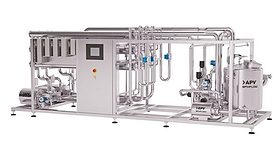Home » Publications » Food Engineering
Food Engineering

2023 April
Cover Story
Back to TopPlant of the Year
Clemens Food Group’s Hatfield North facility was FE’s 2023 Plant of the Year Award winner for the project team’s vision and execution of improving business while focusing on human welfare.
Read More
Feature Articles
Back to TopKeep Tabs On Products from Start to Finish in the Plant
With internal tracking and tracing, product recalls can be smaller in size.
April 27, 2023
Packaging and Food Scarcity: The Profitability in Waste Reduction
Todd Meussling, senior manager of market development at Fresh-Lock discusses how investing in innovative and sustainable packaging can be profitable and contribute to food scarcity/food insecurity initiatives.
April 21, 2023
Cyber Insurance Drives Increased Security
Food companies and manufacturers are meeting stringent security audits to qualify for cyber insurance policies.
April 19, 2023
Robot and Cobot Technology Transform Food Operations
Large- and medium-sized food companies are struggling to find workers and this trend is not going away. So food manufactures are turning to robot/cobot applications to solve new and old problems on the plant floor, while increasing productivity in the post-covid workforce.
April 17, 2023
Make CIP an Integral Part of Your Process
In the same way you use automation to make consistent, quality products, why not use CIP to ensure germ-free cleaning every time?
April 11, 2023
Departments
Back to TopProducts
Back to TopElevate your expertise in food engineering with unparalleled insights and connections.
Get the latest industry updates tailored your way.
JOIN TODAY!Copyright ©2024. All Rights Reserved BNP Media.
Design, CMS, Hosting & Web Development :: ePublishing









